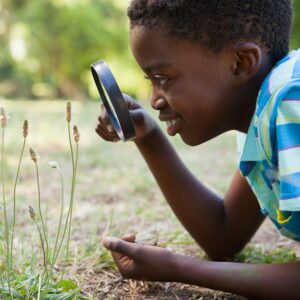60-day returns • free shipping on USA orders $129+


Most of you are familiar with the illustrious fictional detective, Sherlock Holmes. He is famous for solving mysteries by paying close attention to details.
One scenario sticks out in my mind, because it sums up the Holmes character in a nutshell. In the scene Holmes instructs Watson on the difference between seeing and observing.
“When I hear you give your reasons,” Watson remarked, “the thing always appears to me to be so ridiculously simple that I could easily do it myself, though at each successive instance of your reasoning, I am baffled until you explain your process. And yet I believe that my eyes are as good as yours.”
“Quite so,” Holmes answered. “You see, but you do not observe. The distinction is clear. For example, you have frequently seen the steps which lead up from the hall to this room.”
“Frequently.”
“How often?”
“Well, some hundreds of times.”
“Then how many are there?”
“How many? I don’t know.”
“Quite so! You have not observed. And yet you have seen. That is just my point. Now, I know that there are seventeen steps, because I have both seen and observed.”
You can learn a lot if you look closely and carefully. Observation is a great tool for self-education.
Tool #3: Observe Closely and Carefully
Charlotte Mason is famous for promoting learning through literary-style books. But she also recognized the incredible value in learning from objects or actions—from things. (In order to help us remember that this principle applies to all ages, I have changed “children” to “learners” in her comment.)
“The [learners] I am speaking of are much occupied with things as well as with books” (Vol. 6, p. 31).
Whether it is a beautiful picture, a tape measure, a bird scratching at the ground, a demonstration of a knitting stitch, a cello concerto, a map of the world, or an old coin in a museum, opportunities to learn are all around us. The question is Do we look closely and carefully with a desire to learn?
Looking closely and carefully is becoming a rare habit these days. In a fast-paced society people are encouraged to scan, to skim, to keep moving, to flit from one thing to another.
But there is much that can be learned when you slow down and take time to observe and then to think about what you have observed and try to find any relations between the new ideas and those you already know.
And that’s a key. Holmes was not gathering random bits of data; he was constantly looking for relations between what he already knew and what was before him at the moment. It was those relations that helped him solve the mysteries.
Charlotte Mason believed strongly in the importance of those mental connections that pinpointed relations. Here is the rest of her statement given earlier:
“The [learners] I am speaking of are much occupied with things as well as with books, because ‘Education is the Science of Relations,’ is the principle which regulates their curriculum” (Vol. 6, p. 31).
Simply storing or spouting off bits of information is not education. Searching for connections and grasping how different ideas might relate to each other is what helps a person to grow.
Self-education comes through taking in new ideas, thoughtfully comparing them to ideas you have already learned, and discovering how ideas are related.
And it all starts with careful observation.
Podcast: Play in new window | Download

Sonya,
I am enjoying this series so much. It’s really helped me to put things into perspective as my daughter is nearing the high school years.
I have decided to print out each post so I can reference it and remind myself what self education looks like. I love your word pictures and literature references. It makes it easier for me to grasp the concept. Thanks so much!!!